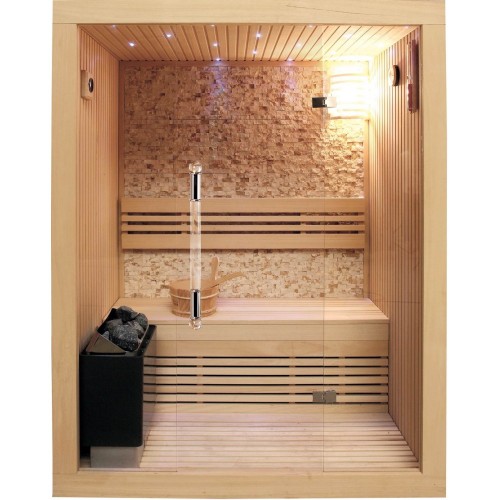Indicators on Traditional Sauna You Need To Know
4 Easy Facts About Traditional Sauna Explained
Table of ContentsWhat Does Traditional Sauna Mean?The 9-Minute Rule for Traditional SaunaSee This Report on Traditional SaunaSee This Report on Traditional SaunaGetting My Traditional Sauna To Work
The majority of the weight shed in a sauna is water loss and is re-gained upon rehydrating. Without a doubt sauna can be an essential part of a healthy and balanced weight loss program. To check out the differences in between typical and IR saunas, I will separate these right into verifiable, academic, and produced differences.Therefore, the best factor in the saunawhich goes to the ceiling directly over the sauna heateris commonly between 185 and 190 F. Claims that a traditional sauna surpasses 200 F is merely not real and not applicable for electrical saunas sold in the United States. The temperature level for a far-infrared sauna is generally set in between 120 and 140 F; however, unlike the standard sauna, the objective in and IR room is not to accomplish a heat.

When a standard sauna has actually been appropriately warmed, the sauna walls are cozy, the air temperature level has actually achieved established temperature and the rocks are very warmed. As an interesting side note, the heated wall surfaces and the rocks are releasing far-infrared warm, incorporated with the warmed air, to develop an "enveloping heat".
Getting The Traditional Sauna To Work
When the high temperature is achieved, the components cycle on and off to preserve the heat. Most standard sauna customers enjoy pouring water over the rocks to produce vapor to increase sauna moisture degrees. The advantages of pouring water over the rocks consist of: making the room much more comfy, dampening the nasal passages, and enabling the usage of aromatherapy by blending essential oils with the water.

When the power gets in the body, it creates the body temperature to boost and eventually leads to perspiration. In an infrared sauna it is necessary for the emitters/heaters to stay on nearly regularly. Considering that there is no mass of rocks to maintain heat, the sauna will cool if the emitters closed off.
8 Simple Techniques For Traditional Sauna
As mentioned above, the sauna bather in an infrared space wants to position himself in front of running emitters to obtain optimal advantage from the warm. The heating time for both rooms can be very various, depending upon how the spaces are made use of. For a typical sauna, a bather must allow 30-40 mins for the area to accomplish a desired temperature level and to correctly pre-heat the rocks.

A well created sauna will usually accomplish a temperature of 150-160 F in concerning 30-40 minutes (Traditional Sauna). For hotter temperature levels, the space might need to warm for a longer period. As soon as the room accomplishes established temperature level, the heating unit will certainly cycle on and off, generally web operating concerning 50% of the moment. The shielded wall surfaces and the heated rocks will maintain the space warm and at secure temperature levels.
To some, 15 minutes was "squandered" while the infrared power heated up the timber panels as opposed to heating a body, while others find a pre-heated room to be much more comfortable and believe a raised beginning temperature level is needed to begin sweating. The length of recommended find more use for every space is around the very same (10-15 minutes per session); however, as a result of the lower air temperature levels and the ability to really feel the results of infrared warmth much faster than a typical sauna, it is not uncommon for an individual to invest a total amount of 20-30 mins in an infrared sauna.
The Buzz on Traditional Sauna

The ordinary cost per kWH of electricity in the U.S. is about $0.11, so a 4.5 kW heating system will certainly set you back about $.50 to run for one hour, if the heating system runs continually for one hour. Normally a sauna heating system will run for 75% of the very first hour and 50% of subsequent hours on considering that the elements cycle once the set Click This Link temperature is achieved.
A two person far-infrared space is normally physically smaller than a typical sauna, commonly regarding 4' x 4' or smaller sized. The IR furnace is typically 1.5-1.7 kW using a 120 volt 15 amp plug-in solution. Because the room can be used sooner than a sauna area, we will presume the area is used for to of an hour consisting of warm up time.
There is a seldom discussed distinction in the social experience between the two rooms. While our society has shed several of the social advantage of the traditional sauna experience, it can be very socially satisfying (Traditional Sauna). From family time in the sauna, to heart-felt discussions with significant others, to sauna partiesthe standard sauna experience can cause intimate interacting socially
Excitement About Traditional Sauna
The majority of higher end infrared spaces include tinted light therapy, audio systems and full-glass fronts.